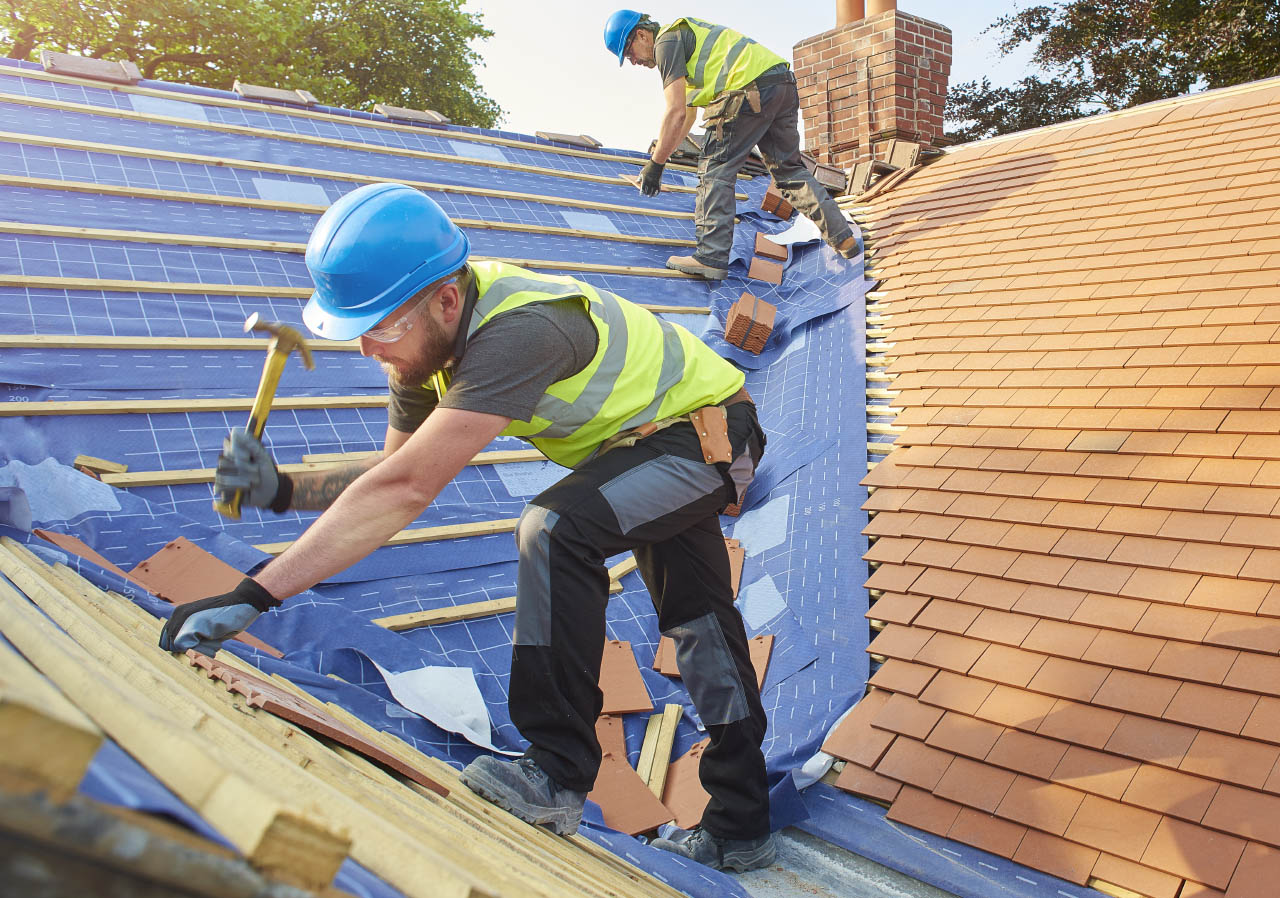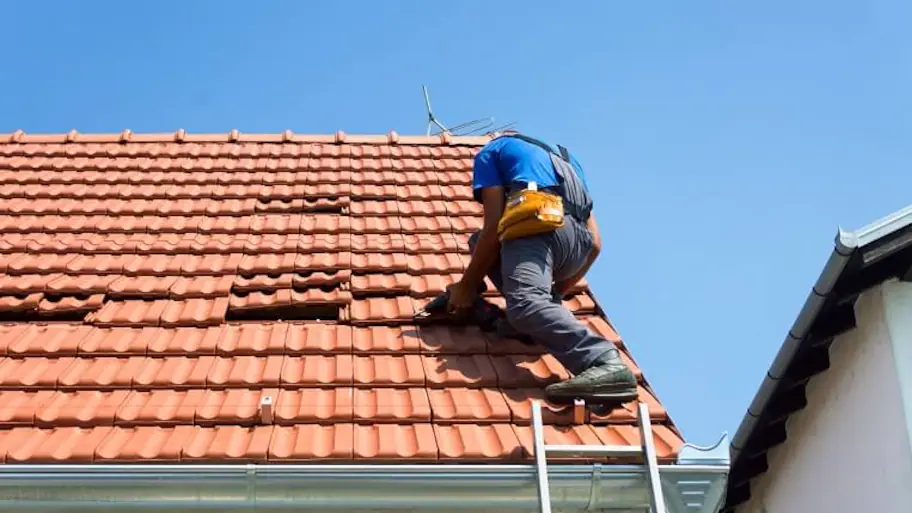Recognizing the Various Sorts Of Roofings: A Comprehensive Guide for Homeowners
With an array of choices-- ranging from the traditional gable to the modern flat-- each kind presents unique advantages and difficulties that ought to align with the home owner's environmental considerations and specific demands. As we explore the ins and outs of different roof covering types, it becomes obvious that one size does not fit all; the ideal selection may shock you.
Gable Roofing Systems
Saddleback roofs, identified by their triangular shape, are among the most preferred roof covering designs due to their simpleness and effectiveness in losing water and snow. This style features 2 sloping sides that meet at a ridge, permitting efficient drain and decreasing the danger of water buildup. The high pitch typically related to gable roofings boosts their ability to handle hefty rainfall, making them appropriate for numerous environments.
Along with their useful benefits, gable roofing systems supply visual adaptability. They can be adjusted to various architectural styles, from typical to modern-day homes. The layout can also suit additional functions such as dormer windows, which enhance natural light and ventilation in the attic room area.
Moreover, gable roof coverings give ample space for insulation, adding to energy effectiveness. Property owners can pick from a selection of roof products, consisting of asphalt roof shingles, metal, and tiles, better enhancing modification choices.
Regardless of their advantages, saddleback roofs may need additional support in areas susceptible to high winds or heavy snowfall. Generally, the gable roofing continues to be a popular option because of its blend of functionality, sturdiness, and aesthetic appeal.
Flat Roofs
Flat roof coverings are often recognized for their minimal layout and functional applications, especially in industrial and commercial setups (oahu roofing). These roofings feature a straight or virtually straight surface, which enables very easy building and versatile room use. While they may do not have the visual appeal of angled roofs, level roofing systems offer countless benefits, particularly in urban settings where optimizing area is essential
Among the main benefits of flat roof coverings is their access. House owners can utilize the roofing system space for numerous objectives, such as roof gardens, balconies, or solar panel setups. In addition, flat roofings are generally more cost-efficient to keep and install contrasted to their sloped equivalents, as they need less products and labor.
However, level roof coverings do present particular obstacles. Proper drain is necessary to prevent water pooling, which can cause leakages and structural damage. For this reason, selecting top notch waterproofing materials and regular inspections are important for ensuring durability. Common materials utilized for level roofs consist of built-up roofing (BUR), modified asphalt, and single-ply membranes, each offering distinctive advantages. On the whole, level roof coverings function as a versatile and useful selection for many property owners and companies alike.
Hip Roof Coverings
Hip roofs are identified by their sloped sides that assemble at the top, developing a ridge. This design stands out from saddleback roofs, as all four sides of a hip roofing system incline downwards toward the walls, providing an extra steady structure. The angle of the slopes can differ, enabling for versatility in building appearances and functionality.
One of the main benefits of hip roofing systems is their capability to hold up against heavy winds and damaging climate condition. The sloped surface areas enable much better water drainage, lowering the risk of leakages and water damage. In addition, hip roofings supply enhanced attic area, which can be made use of for storage space or perhaps exchanged habitable locations.
However, creating a hip roof can be a lot more complex and expensive than less complex roof kinds, such as gable roofs. The additional product and labor entailed in creating the inclines and guaranteeing correct architectural integrity can bring about greater expenses. Despite these drawbacks, several homeowners why not check here favor hip roofings for their resilience, aesthetic allure, and possibility for power efficiency.
Mansard Roofing Systems
Mansard roofings, frequently acknowledged by their unique four-sided layout, attribute 2 inclines on each side, with the lower slope being steeper than the top. This architectural style, stemming from France in the 17th century, is not only aesthetically attractive yet useful, as it maximizes the usable space in the top floors of a structure. The steep reduced slope allows for more clearance, making it an ideal selection for loft spaces or attics, which can be exchanged living areas.
Mansard roofs are characterized by their convenience, accommodating numerous building designs, from conventional to modern-day. They can be created with different materials, including asphalt tiles, slate, or steel, giving house owners with an array of alternatives to match their budgets and preferences. In addition, the layout permits for the integration of dormer windows, enhancing all-natural light and air flow in the upper levels.
Nonetheless, it is necessary to think about the potential downsides. Mansard roofings might require more upkeep due to the intricacy of their design, and their high slopes can be testing for snow and rain runoff. In general, mansard roofs incorporate sophistication with practicality, making them a popular selection amongst home owners seeking distinct building functions.
Shed Roofs
As homeowners significantly seek simpleness and performance in their building layouts, lost roofing systems have arised as a prominent choice. Identified by a single sloping airplane, a shed roof provides a minimal aesthetic that enhances different home designs, from contemporary to rustic.
One of the main advantages of a shed roofing system is its straightforward construction, which often equates to lower labor and material prices. This design permits for effective water drain, reducing the danger of leakages and water damages. Additionally, the upright slope supplies ample room for skylights, enhancing natural light within the inside.
Dropped roofs additionally provide adaptability in regards to use. They can be properly incorporated right into enhancements, garages, or exterior structures like structures and sheds. In addition, this roof covering style can fit different roof products, consisting of steel, asphalt tiles, or even environment-friendly roofings, aligning with environment-friendly campaigns.
However, it is vital to consider regional climate conditions, as hefty snow lots may demand changes to the roofing's angle or structure. Overall, shed roofing systems provide a functional and aesthetically pleasing alternative for homeowners wanting to make best use of functionality without jeopardizing design.
Conclusion


Gable roof coverings, characterized by their triangular shape, are among the most preferred roof covering designs due to their simpleness and effectiveness in her comment is here dropping water and snow. oahu roofing. The steep pitch typically associated with gable roofings boosts their ability to handle heavy precipitation, making them ideal for different environments
While they may lack the aesthetic charm of pitched roof coverings, flat roofing systems use numerous benefits, especially in urban settings where making best use of area is crucial.
